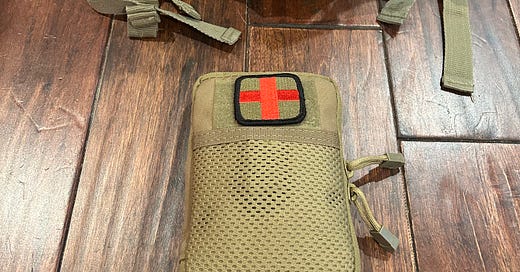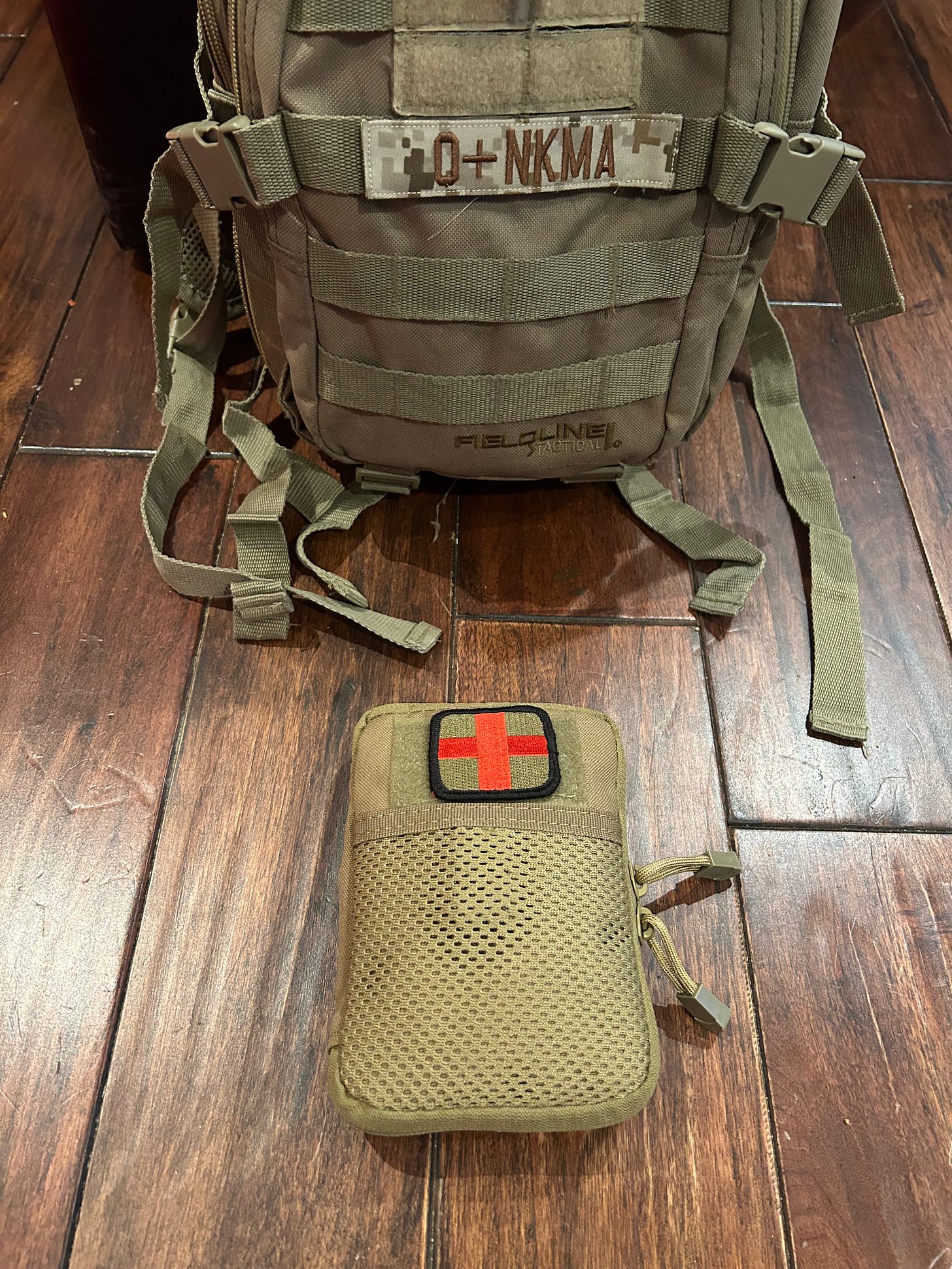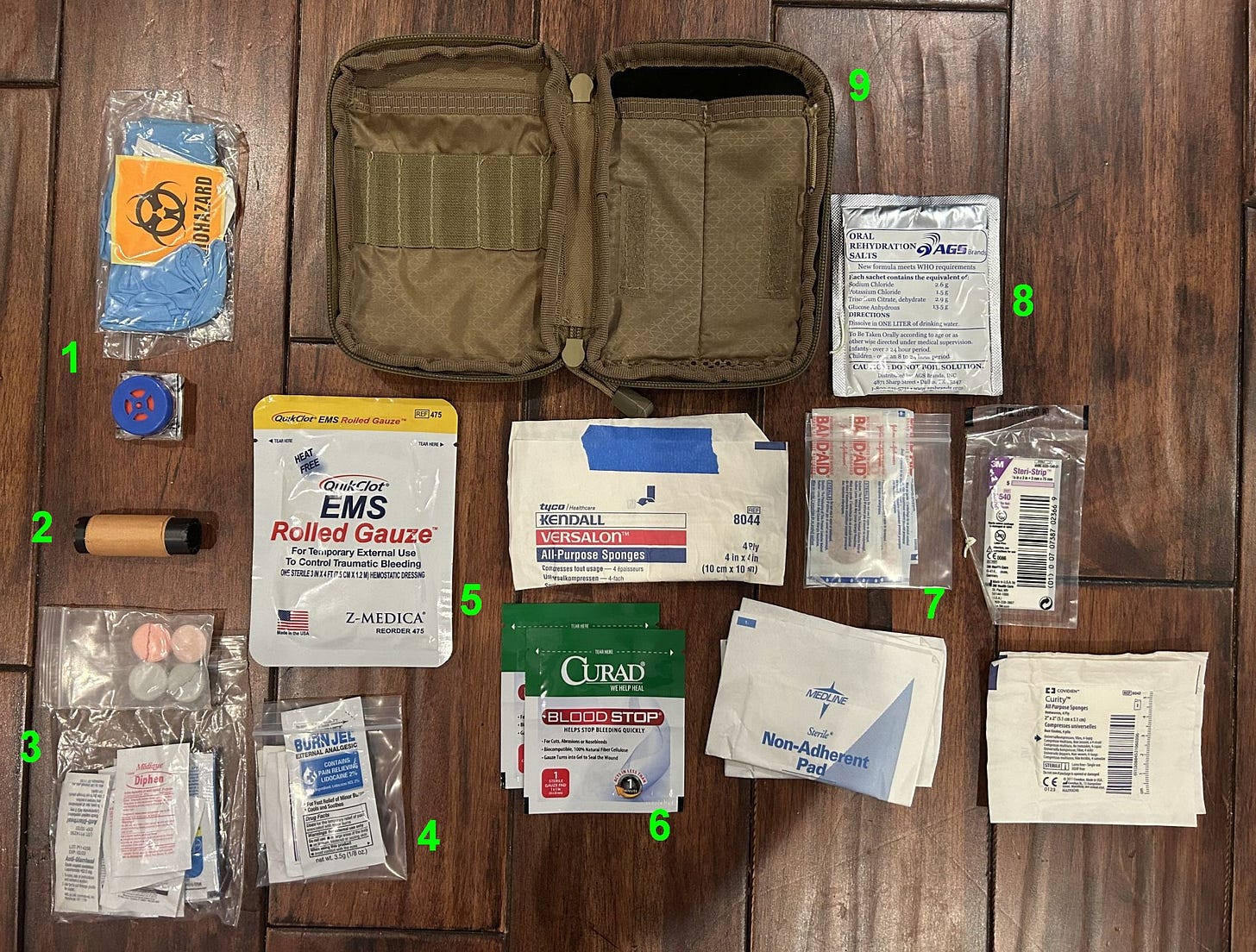One of my coworkers experienced a not-so-uncommon foot injury while hiking so I thought I’d pull apart the kit I keep in my rucksack.
Here is a list of the various bits and why I assembled this the way I did.
Personal protective equipment (PPE) – This is more to attend to others and not become acquainted with their bodily fluids: gloves in a disposal bag and a small one way respirator for mouth-to-mouth. Though practically on a hiking trail, unless someone has a cell phone to call EMS you’re not going to rewind a lifetime of substance abuse or coronary disease without drugs or an AED in the case of a heart attack.
Leukotape P – this is the modern replacement for Moleskin for foot blisters. If you’re prone to these between toes or your heel, apply it before your hike. It doesn’t take long. I carry a few feet wound onto a small piece of plastic tube instead of the entire roll.
Stuff for inside your body – OTC pain relievers (but not aspirin1), anti-diarrheal (Imodioum) and some Tums because heartburn really ruins hikes.
Stuff for outside your body – small packet of sunscreen, burn jel, sting relief pads, 3-in-1 antibiotic ointment and benzalkonium wipes to clean scrapes (soap and water is better but unlikely to be available). Don’t apply alcohol to a break in your skin2.
QuikClot – Given time, pressure to a wound will stop bleeding. But when you don’t have time use this stuff. The military suffered through its development and now you can practically buy it at Circle K.
BloodStop – Like QuikClot but I use this for scalp lacerations that take a long time to stop. These are small pads, the size of a silver dollar, that you put on your noggin’ and don’t touch. Just leave it there for a few minutes then carefully put a Band-Aid over it. Don’t peel it off!
Gauze – Pack a selection but 4x4” squares are common. You want to use gauze to mop things up and apply pressure to wounds while you get closures ready. The white pack are SteriStrips for holding the edges of skin together. They take some practice so buy an extra pack to train on at home. Also Band-Aids, of course.
ORS – Oral rehydration salts can save a life on the trail when mixed with water. They taste terrible but so does passing out and going into shock because your blood chemistry is all wacko. These are also great if you eat something bad and you’re non-stop vomiting or can’t get out of the bathroom. Gatorade makes a pre-mixed product you can keep at home for this situation.
Finally, a dedicated pouch to put it all in. You want one that opens like a clam shell to expose everything inside. You may not be in a panic but if someone else uses it to help you, well, help them out in advance. And mark it clearly. Mine is 4½ x 6½ x 2” and they are available on eBay.
It is nice that most of this stuff is available at Walmart! Other things you may want to carry for longer hikes, semi-medical related include:
Instant ice pack
Cohesive bandage
Toilet paper
Bandana (always!)
Lastly if you want to read what I keep in my tactical bag for city-based dangers (gun shots, civil unrest, etc.) you can read about that at the bottom of this page.
Aspirin is a blood thinner and that is exactly the wrong thing you want to be ingesting if you’re bruised or bleeding.
Alcohol is for cleaning tools and surfaces not flesh.




